Just because the swim-trunks and bikinis have been tucked away for the rest of the year doesn’t mean that the paddling season has to end! Autumn, especially in New England, can be one of the best seasons for paddling. The exodus of vacationers leaves the waters quiet and the changing foliage provides views straight from the artist’s pallet! However inviting the weather and conditions may seem venturing out onto the water this late in the season is not without danger and the threat of cold water immersion is on the top of the list.
When you’re paddling on cold water (under 65 deg F) you absolutely need to be prepared for the worst-case scenario; a prolonged swim that will expose you to developing hypothermia. The best strategy to protect against the effects of cold water is to dress for immersion using a layering strategy. Each of these layers plays an important role in keeping you warm while paddling and buying you some precious time if you end up in the frosty drink:
- Moisture-wicking base layer: This layer is the closest to your body and acts to wick perspiration away from your skin. Consider wearing a full-length polypropylene shirt and pants such as EMS Teckwick. Never wear cotton as it will trap moisture against your body and can accelerate the development of hypothermia if it were to get wet.
- Insulating mid-layer: This layer is designed to keep you warm. Fleece and wool garments make for great insulation on the water. I’m partial to Kokatat’s Polartec drysuit liner because it’s both warm and cut appropriately to fit under a dry suit. Some paddlers prefer to wear neoprene such as a 3mm thick, Farmer John-style wetsuit for their insulating layer. I’ve found that neoprene can feel clammy when wet and can impede the padding motion.
- Waterproof shell layer: This is the layer that will keep you dry. The best shell layer consists of a full-length dry suit but this may be substituted for a dry top if you are wearing neoprene as an insulating layer. Paddling suits are another option but they lack a rubber neck gasket and water can get into the suit via the neck closure during a swim. There are few substitutes for Gortex when it comes to shell layer material in terms of waterproofness and breathability. Many of the less expensive materials are far less breathable and leave you feeling sweaty like you’ve been paddling in a sauna!
- Keep your noggin warm with a wool hat. A balaclava or neoprene diver’s hood can provide more coverage for your face if it’s windy or the air temperature is especially cold.
- Don’t forget your hands and feet: neoprene gloves will help to keep your hands warm but not dry. Sometimes, especially when the wind is cold, I’ll wear the neoprene gloves inside of pogies to keep my digits dexterous and toasty warm. Always bring an extra pair of gloves along in case you lose one along the way! When it comes to the feet try wearing wool socks inside of the integrated dry suit “footies” and neoprene booties on the outside.
The following paddling gear will not only help to keep you warm but could also save your life!:
- Wearing a PFD becomes even more important when the water is cold. One of the greatest dangers of cold water immersion is a phenomenon known as “cold shock” where an involuntary gasping reflex can be incited by rapid exposure to cold water. Cold shock, not hypothermia, is the leading cause of cold-water drowning during the first minutes of immersion. A PFD will keep you afloat and help you survive the critical first minutes of exposure. Furthermore, the PFD will act as an additional insulating layer to protect your core from the onslaught of the cold elements (wind, rain, splash, ect) while paddling.
- A neoprene spray skirt will also help to keep you dry and warm. The neoprene tube will act as an additional insulating layer to trap heat near your core while the neoprene deck will help to turn your cockpit into a tropical paradise! Furthermore, a neoprene skirt will help to keep you attached to your kayak so that you can hit your combat roll to prevent that cold water swim from ever happening.
With all of this paddling gear it may seem like a cold water kayaker would be prepared to go to the moon! It’s true that you’ll look something like an astronaut but when it comes to cold water you’re always better off safe than sorry. Respect cold water by dressing for immersion and you’ll go on to enjoy an elongated (or never-ending) paddling season!
Happy and Safe Paddling!
-Kayak Dave



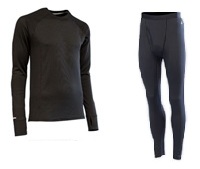

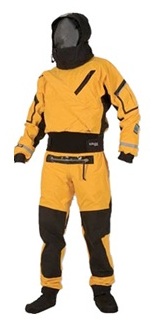
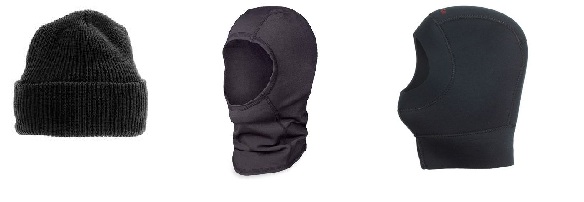

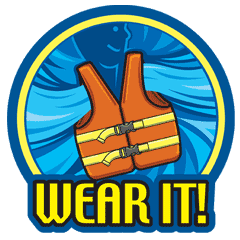
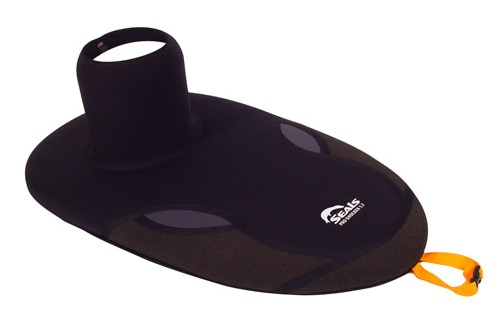
5 Responses to How to Dress Appropriately for Cold Water Paddling